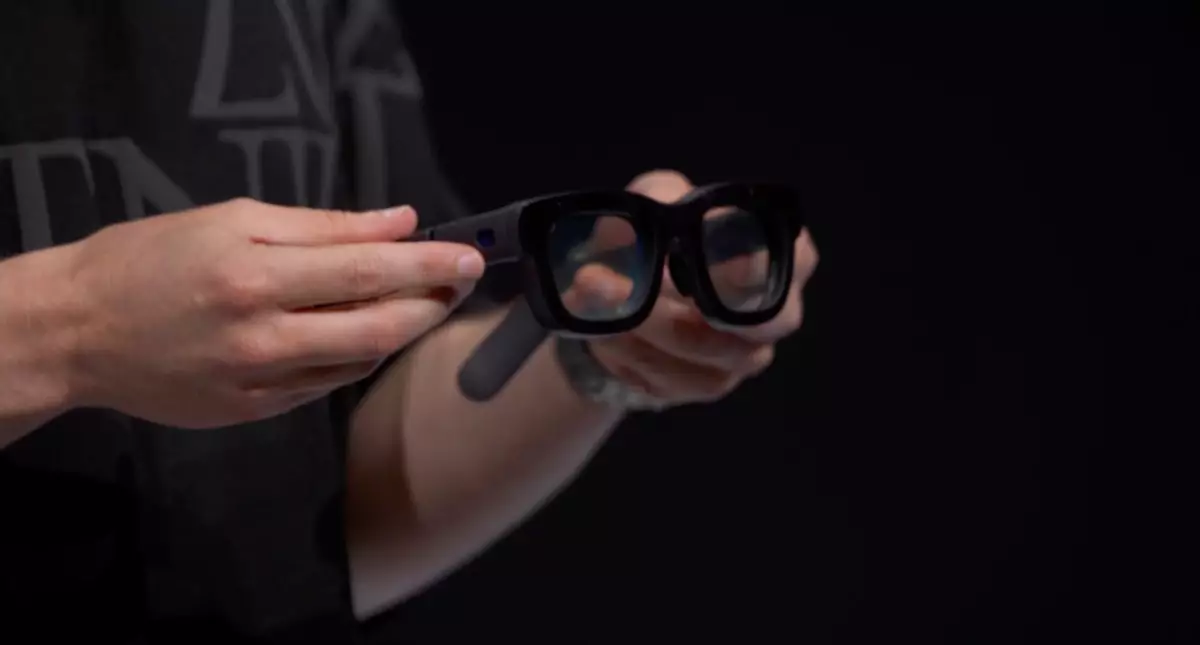At the recent Meta Connect event, CEO Mark Zuckerberg unveiled a new advancement in augmented reality technology known as Orion. Described boldly as “the most advanced glasses the world has ever seen,” these glasses promise to transform how we interact with both digital content and our physical surroundings. Unlike their bulky predecessor, Snap’s Spectacles 5, Orion is designed to be sleek and efficient, pointing towards a future where augmented reality (AR) is seamlessly integrated into our everyday lives.
Orion’s design incorporates advanced engineering that allows it to operate as a heads-up display, signifying a leap toward true augmented reality. The glasses are embedded with tiny projectors that deliver digital visuals directly into the user’s field of vision. This technology is reminiscent of Google Glass but with a modern twist, showcasing a decade-long journey of research and development at Meta. However, even as Zuckerberg exclaims these innovations as “awesome,” it is essential to note that the product is still in a somewhat nascent phase. He acknowledges that considerable refinement is needed before they can transition from exciting prototypes to a commercially viable product.
The promise of a neural interface, stemming from Meta’s acquisition of CTRL-labs in 2019, raises the stakes even higher. This technology enables users to control the glasses through movements, enhancing the user experience by minimizing reliance on traditional input methods. The integration of a wristband compatible with these glasses suggests an immersive experience that transcends traditional AR limitations.
Meta is not just launching a new gadget; it aims to position Orion as a successor to its Ray-Ban Meta glasses, which were initially designed for streaming and capturing moments. While these glasses introduced a new category focused on display-less experiences, Orion builds on that foundation by incorporating true augmented reality functionalities. With claims of offering the largest field of view (FOV) in the smallest AR form factor to date, this product seeks to draw a clear distinction from its competitors, particularly Snap’s more cumbersome Spectacles.
The promise of a broad FOV indicates potential applications that range from multitasking to immersive entertainment experiences. Meta suggests that Orion will allow users to interact with life-size holograms while maintaining a connection to their physical environment, creating a wholly integrated experience that merges the digital and real world seamlessly.
Interestingly, Orion’s initial launch is aimed only at developers. This classic strategy of tech companies is intended to generate excitement and inspire third-party developers to create applications that leverage the unique features of these augmented reality glasses. By fostering a developer ecosystem, Meta hopes to stimulate the growth of innovative solutions that will enhance the glasses’ capabilities and user experiences.
Success with the earlier Ray-Ban Meta glasses indicates the potential for Orion to gain traction. The presence of Meta AI in these earlier models exemplifies the strategic direction of blending artificial intelligence with augmented reality, suggesting that future developments may introduce features like real-time language translation and enhanced navigation.
However, the path to innovation is rarely smooth. Reports indicate that the cost to build each Orion unit hovered around an astonishing $10,000. While Meta is notorious for sacrificing profit margins for product development—particularly with its Quest line—the financial implications of Orion’s production suggest significant hurdles remain.
Furthermore, as Meta gears up for a product release, there’s speculation about delivering a version with a smaller heads-up display to precede the final iteration of the glasses. This strategic decision may serve as a means to collect user feedback and make necessary adjustments, paving the way for wider adoption in the future.
Meta’s Orion glasses offer a tantalizing glimpse into the future of augmented reality technology. By pushing the boundaries of what is achievable with wearable devices, Meta seeks to not only fulfill longstanding industry dreams but redefine how we interact with the digital world. As the technology continues to evolve, the anticipation surrounding Orion’s release builds, promising a transformative experience for users willing to embrace the digital frontier. If successfully realized, Orion could spearhead a new era where augmented reality seamlessly blends with daily life, heralding an exciting future that goes beyond mere speculation.

